SUMAN NAISHADHAM and ROB GILLIES
Updated Wed, May 15, 2024
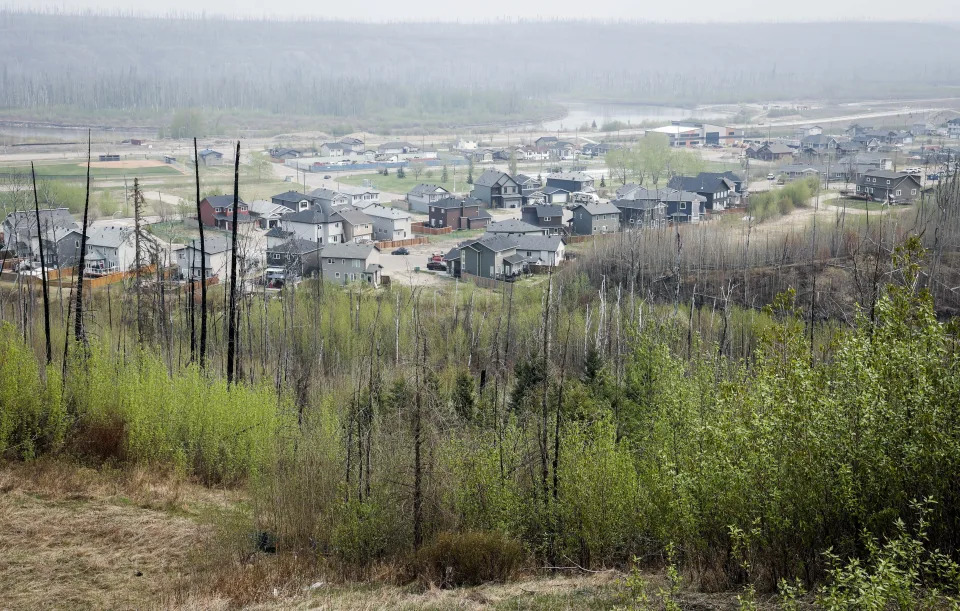
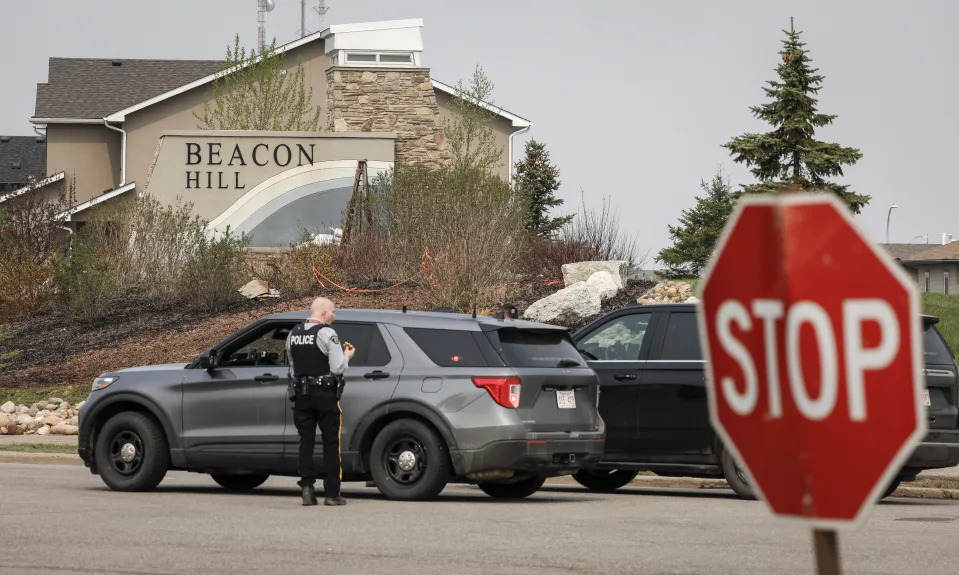
Burned trees from the 2016 wildfire stand sentinel over a neighborhood in Fort McMurray, Alberta, on Wednesday, May 15, 2024.
(Jeff McIntosh /The Canadian Press via AP)
The threat from a wildfire near Canada's oil sands hub of Fort McMurray, Alberta, appeared to be easing on Wednesday, a day after it forced thousands of residents to evacuate and stirred memories of a damaging blaze nearly a decade earlier.
Favorable winds were expected to push the fire away from the city of about 68,000 in northwest Canada, where many residents earn a paycheck from the nearby oil industry. The Fort McMurray fire comes as Canada is just entering a new fire season after last year’s record number of wildfires sent choking smoke across parts of the U.S. and forced more than 235,000 Canadians to evacuate their communities.
But scientists have said it's not clear that wildfire smoke will be the same problem it was last year, when unusual weather patterns drove the haze southward.
In Fort McMurray, about 6,600 residents fled parts of the city's southern end while others were on on alert. It was familiar terrain for the Albertan city, which survived a catastrophic blaze in 2016 that destroyed 2,400 homes and forced more than 80,000 people to flee.
Jay Telegdi, who lost his home to that wildfire, watched from his balcony on Tuesday as the sky over downtown turned orange and black. It “burned your eyes” to walk outside, Telegdi said in a phone interview, adding that it was slightly easier to breathe on Wednesday.
“You can grow accustomed to it,” said Telegdi, who works for the Athabasca Chipewyan First Nation. “We’ve come to accept columns of smoke blocking out the whole sky and yet we’re still drilling for oil.”
Canada is the world’s fourth-largest producer of oil and fifth-largest producer of gas, a reality that sits uncomfortably with the nation’s pledges to protect biodiversity and lead the global fight against climate change. When burned, oil and gas release heat-trapping carbon dioxide into the atmosphere, intensifying the very conditions that help wildfires scorch millions of acres.
In Canada last year, they burned an area larger than New York state, releasing nearly three times the emissions produced by the country's entire economy in a year, and sending hazardous air to U.S. cities thousands of miles away. No civilians died, but at least four firefighters died.
Dave Phillips, senior climatologist at Environment Canada, a government agency, said the smoke that reached the U.S. East Coast last year largely came from Eastern Canada.
“That was odd in the sense most wildfires in Canada are in British Columbia and Alberta. You rarely see a fire in Quebec and the smoke travels to the United States,” Phillips said, adding that Eastern Canada has seen a lot more rain this spring and has been much cooler.
Mike Flannigan, a professor of wildland fire at Thompson Rivers University in British Columbia, said “legacy effects” of last year's season are spilling over to 2024. Ongoing drought in Western Canada, higher temperatures due to El Nino and so-called “zombie fires” that burn underground through the winter in organic matter and reappear once the snow melts in the spring are factors driving wildfires in some parts of the country.
Alberta, the province that includes Fort McMurray, draws significant revenue from the fossil fuel industry. Suncor Energy said Wednesday its operations outside the city were not affected by the fires, but that some of its employees and contractors were. Fire officials said evacuation orders would likely be in place in Fort McMurray until Tuesday.
Charlie Angus, a member of Parliament from the leftist New Democrats party, said on X that oil companies including Exxon Mobil and Shell “predicted the climate catastrophe that is upending life today,” which studies from journalists, scientists and advocacy groups have confirmed in subsequent years.
“They just never bothered to tell the people in Fort McMurray who are living with the consequences of peak C02,” Angus wrote.
In the neighboring province of British Columbia, a low-pressure system moving into the northern part of the province was expected to dampen activity at a blaze that has forced several thousand people to flee their homes in and around Fort Nelson, a town of about 4,700, the province's wildfire service said.
In Manitoba, about 500 people have been forced out of their homes in the remote northwestern community of Cranberry Portage ahead of a fire measuring more than 300 square kilometers. Officials said Wednesday the fire was about 80% contained and residents might be allowed to return to their homes this weekend.
___
Naishadham reported from Washington, D.C. Gillies reported from Toronto.
___
Wildfire Prompts Partial Evacuation of Canada’s Oil-Sands Capital
Robert Tuttle
Tue, May 14, 2024

(Bloomberg) -- Portions of Fort McMurray, Alberta, are being evacuated as a wildfire approaches the city, the unofficial capital of Canada’s oil sands industry that almost burned to the ground during a historic blaze eight years ago.
The 11,000 hectare (27,000 acre) blaze expanded overnight and is moving northeastward toward the the city. The fire is now about 7.5 kilometers (4.7 miles) from the Fort McMurray landfill, southwest of the city, but thick smoke is making it difficult to determine exact distances, Alberta Wildfire said in a release. Winds are blowing from the southwest, gusting as high as 40 kilometers an hour.
“This will be a challenging day for firefighters,” the agency warned, adding some had to be pulled from the fire line for safety reasons.
Rising temperatures across western Canada increased fire risk in recent days, contributing to poor air quality in Calgary over the weekend. Rain in the Fort McMurray area was supposed to ease the wildfires on Monday, but fire activity increased in the afternoon and into the evening, according to Alberta Wildfire. More than 65% of Canada was abnormally parched or in drought at the end of March, threatening another smoke-filled summer after last year’s fire season, which was Canada’s worst on record.
The Regional Municipality of Wood Buffalo, where Fort McMurray is located, declared a state of local emergency. Residents of the communities of Beacon Hill, Abasand, Prairie Creek and Grayling Terrace were ordered to evacuate. Abasand and Beacon Hill had about 6,000 residents in 2021, according to the Municipal Census Report.
Fort McMurray, in a remote and heavily forested part of the province, was ravaged by a blaze in 2016 that burned down large sections of the city, forcing thousands to evacuate and temporarily shutting more than 1 million barrels a day of oil output. The fire caused about C$3.7 billion ($2.7 billion) in insured losses, making it Canada’s costliest natural disaster.
The current fire is one of three that are listed as out of control in Alberta and the closest to the oil sands, where the bulk of Canada’s 4.9 million barrels a day of crude is produced. The fire prompted an alert Friday that put the city’s 70,000 residents on notice to be prepared to leave.
Read More: ‘Zombie Fires’ Near Oil and Gas Wells Threaten Canada’s Drillers
The fire isn’t currently near any major oil sands mines, but its southern perimeter is within 8 kilometers (5 miles) of Athabasca Oil Corp.’s Hangingstone well site, which produced almost 7,500 barrels of oil a day in February, Alberta Energy Regulator data show. The company didn’t respond to questions on the status of the facility.
In addition, two Inter Pipeline Ltd. natural gas liquid lines and a Pembina Pipeline Corp. crude pipeline pass through the west end of the wildfire zone, according to Alberta Energy Regulator and Alberta Wildfire data. Inter Pipeline said in an email its assets haven’t been affected, but the company is monitoring the situation. Pembina didn’t respond to an email seeking comment.
Emails to the biggest oil sands companies in the area, including Suncor Energy Inc., Canadian Natural Resources Ltd. and Imperial Oil Ltd., which operate massive oil sands mines to the north of the city, regarding the impact of the evacuations on their operations were not immediately returned.
Meanwhile, a blaze in British Columbia continues to threaten the town of Fort Nelson, on the northern edge of a major natural gas producing region. The town’s 3,000 residents are under an evacuation order and new evacuation orders and alerts were issued Monday for nearby areas.
A wildfire has forced out hundreds of residents in Canada's oil sands hub of Fort McMurray
Associated Press
Updated Tue, May 14, 2024

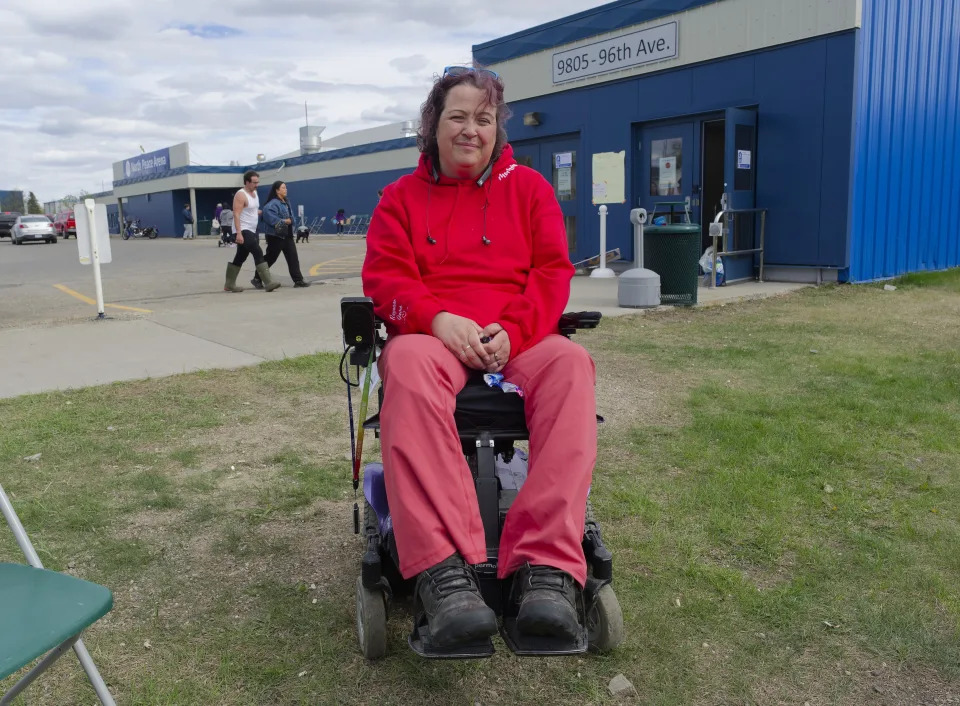
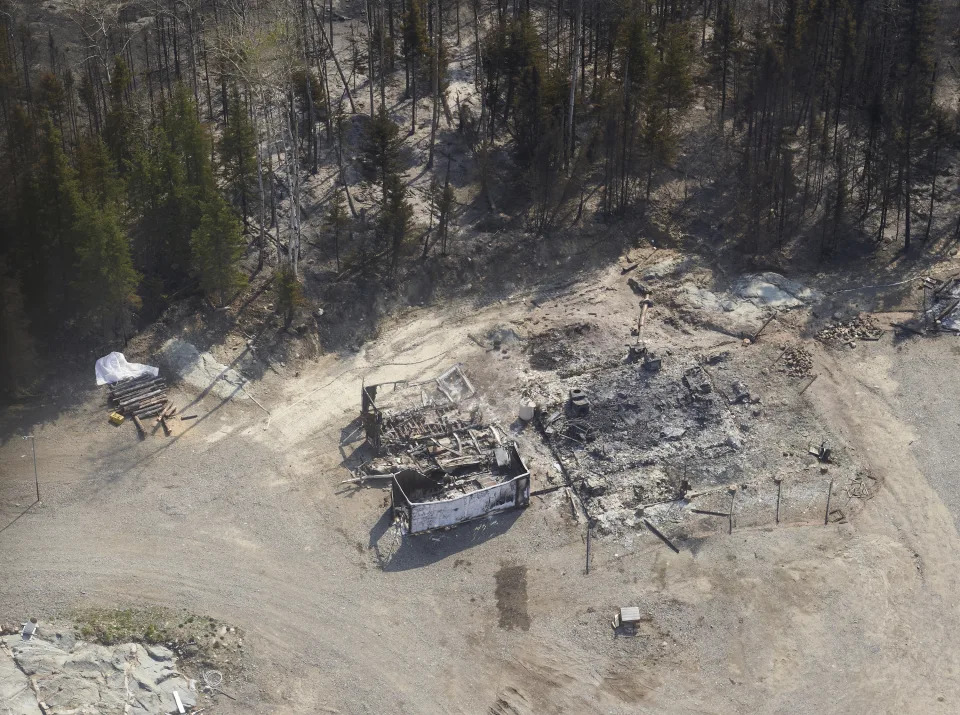
Kristen Leer, a Fort Nelson, B.C. evacuee, stops for a photo at the North Peace Arena in Fort St. John, B.C., on Monday, May 13, 2024. Leer said as a quadriplegic she is impressed with how the province is treating people with disabilities.Wildfires are forcing more people to evacuate their homes in dry and windy northeastern B.C. (Jesse Boily /The Canadian Press via AP)
VANCOUVER, British Columbia (AP) — Hundreds of residents in four neighborhoods in the southern end of Canada’s oil sand hub of Fort McMurray, Alberta, were ordered to evacuate with a wildfire threatening the community, authorities said Tuesday.
The Rural Municipality of Wood Buffalo said residents in Beacon Hill, Abasand, Prairie Creek and Grayling Terrace needed to leave by 4 p.m.
An emergency evacuation warning remained in place for the rest of Fort McMurray and surrounding areas.
The rural municipality said the residents in the four neighborhoods were being ordered out to clear room for crews to fight the fire, which had moved to within 13 kilometers (8 miles) of the city.
Fort McMurray has a population of about 68,000, and a wildfire there in 2016 destroyed 2,400 homes and forced more than 80,000 people to flee.
“It’s very important for me to know that this fire activity is very different than the 2016 Horse River wildfire. We have an abundance of resources and we are well positioned to respond to this situation,” Regional Fire Chief Jody Butz said.
Suzy Gerendi, who runs the dessert shop in the Beacon Hill neighborhood, said she was already packed up when the evacuation order came down. Gerendi lived in Beacon Hill when fire overtook it in 2016.
She immediately began the drive towards Edmonton, Alberta with her three dogs.
“It’s very, very dark and orange,” Gerendi said. “It brings up some memories and it’s not a good feeling.”
Residents were also dealing with heavy smoke and ash.
“It’s dark. The smoke is everywhere,” said resident Else Hoko.
Hoko picked up her two sons from school in Abasand after receiving the evacuation order. She had also fled in 2016.
“I’m so stressed,” she said, adding that she’s praying for rain.
The Beacon Hill and Abasand neighborhoods saw serious losses in 2016.
The current fire has grown to about 110 square kilometers (42.5 square miles) and remains out of control.
Josee St. Onge, an Alberta Wildfire information officer, said wind is pushing the fire toward the community.
She said crews have been pulled from the fire line for safety reasons, and air tankers and helicopters continue to drop water and retardant on the “active edges.”
“Unfortunately, these are not favorable winds for us, and the fire will continue to advance towards the town until we see a wind shift,” she said.
More than 230 wildfires were burning across western Canada, most of them in British Columbia, where about 130 were counted, officials said.
In the northeast of the neighboring province of British Columbia, areas subject to mandatory evacuation increased, with the latest order Monday for Doig River First Nation and the Peace River Regional District as a fire threatened nearby.
Forecasts on Tuesday called for wind that could blow a growing wildfire closer to Fort Nelson. Emergency workers had been phoning as many of the estimated 50 residents still in town and urging them to go.
The British Columbia Wildfire Service said the blaze had grown to 84 square kilometers (32 miles). On Monday, it was about 53 square kilometers (21 miles) in size. A photo by the service shows the billowing blaze spreading in a vast wooded area.
The community of about 4,700 and the neighboring Fort Nelson First Nation have been under an evacuation order since Friday.
Northern Rockies Regional Municipality Mayor Rob Fraser said one drawback of the evacuation is the challenge for essential staff, including firefighters, to find food.
“This is really going to be weather dependent, and so far the weather has been holding with us,” Fraser said of the wildfire in a video posted to Facebook.
In 2023, Canada experienced a record number of wildfires that caused choking smoke in parts of the U.S. and forced more than 235,000 Canadians to evacuate their communities. At least four firefighters died.
Wildfire in Canada forces thousands to evacuate
Reuters Videos
Updated Tue, May 14, 2024 at 11:54 PM MDT
STORY: :: A large wildfire is seen approaching a western
Canada oil town, forcing thousands to evacuate
:: May 14, 2024
:: Fort McMurray, Canada
:: Josee St-Onge/Alberta Wildfire Information Officer
“Wildfire MWF017 is still out of control and its last known size was 9602 hectares, but we know that it has grown since the size estimate was taken. The wildfire grew significantly to the northeast yesterday and continues to grow in that direction today. The wind is pushing it towards the town of Fort McMurray.”
“Fire activity is increasing on the northeastern edge of the wildfire driven by winds from the southwest. We're seeing extreme fire behavior. Smoke columns are developing and the skies are covered in smoke. Firefighters have been pulled from the fire line for safety reasons. We continue to work on this wildfire with aerial support. Helicopters and air tankers are dropping water and retardant on the active edges of the fire.”
The fire, fueled by tinder dry conditions and high winds, has been threatening the city in the western province of Alberta since last week. It is now about 8 miles away to the south west.
Canada wildfires 2024: Images show wildfire season roaring to a start in Western Canada
Corné van Hoepen
·Editor, Yahoo News Canada
Wed, May 15, 2024 at 12:29 PM MDT
13 / 13
Northern lights shine behind Fort Nelson wildfire
The wildfire forcing thousands to evacuate from a northeast British Columbia town has doubled again in size as the blaze grows merely a few kilometres west of city limits. The Aurora Borealis shines overhead of a B.C. Conservation Officer Service vehicle near the junction of highways 97 and 77, as a wildfire burns in the background near Fort Nelson, B.C., in a Saturday, May 11, 2024, handout photo.More
Wildfire season is roaring to a start with dozens of wildfires being reported across British Columbia and Alberta, with thousands facing mandatory evacuation orders.
In Fort Nelson, B.C., about 4,700 people are out of their homes. Roughly 6,600 residents have been evacuated out of parts of Fort McMurray, Alta., while the rest of the city remains on evacuation alert. And a fire near Cranberry Portage, Man., has forced out about 500 residents, according to reports by The Canadian Press.
The report shares that B.C. Wildfire Service says fires this year have already burned through more than 2,300 square kilometres.
That's already enough to place 2024 in the middle of rankings for total amounts burned in entire years since 2008.
Dry conditions in both provinces raise fears of fires sparking and spreading further.
View comments
Fear, anxiety as thousands flee their homes in Fort McMurray due to threat of wildfire
CBC
Wed, May 15, 2024
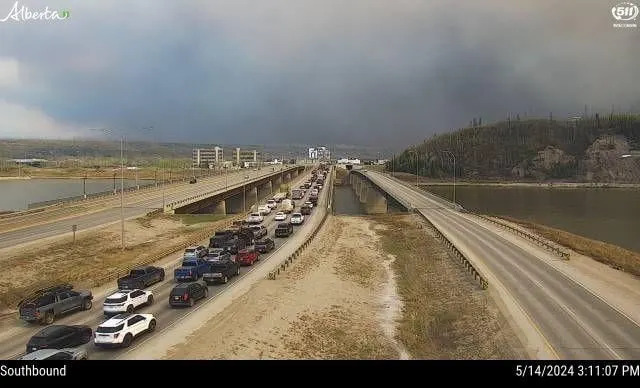
A highway camera photo shows traffic in Fort McMurray jammed in the southbound lane of Highway 63 on the north side of the Athabasca River. The image was captured at 3:11 p.m. MT Tuesday, about an hour after an evacuation order was issued for four neighbourhoods. (511 Alberta - image credit)
Thousands of Fort McMurray residents headed south to safety as a large out-of-control wildfire drew closer to their community, but many are worried they won't have a home to return to.
An evacuation order was issued Tuesday afternoon for the neighbourhoods of Beacon Hill, Abasand, Prairie Creek and Grayling Terrace, as the wildfire southwest of the community continues to grow.
Other areas in Fort McMurray remain on evacuation alert and residents need to be ready to leave on short notice.
Marina Barnes has lived in Fort McMurray for four years and evacuated from her home in Abasand Tuesday.
"I think the worst part right now is the unknown," Barnes told CBC as she and a friend evacuated to Lac La Biche in the evening.
"Not knowing if we're going to have a home to go back to."
The Regional Municipality of Wood Buffalo had told residents to head to an evacuation centre in Lac La Biche, but around 7 p.m., the municipality posted on social media that accommodation in Lac La Biche was full and directed evacuees to Cold Lake, about 147 kilometres to a new evacuation centre at the Agriplex.
The City of Edmonton is also accepting evacuees at a reception centre located in the Clareview Community Recreation Centre at 3804 139th Avenue.
As of Tuesday night, the wildfire threatening the community has covered nearly 21,000 hectares as shifting winds and rising temperatures continue accelerating its growth and pushing the flames closer to the community.
All residents in the evacuation zone were ordered to leave by 4 p.m. MT.
"I could see the orange glow from my balcony, and where I live in Abasand, it's the farthest back apartment. So if the fire were to reach Abasand, my building would have been the first one to get hit," Barnes said.
Moving forward from 2016
For some Fort McMurray residents, having to leave home due to the threat of wildfire is a familiar and bitter experience.
"Nothing can prepare you," Aleks Mortlock said as he recalled having his home destroyed in the 2016 fire.
"Still the same anxiety, same things going through your mind, and this time, I have kids to worry about," Mortlock said, noting he was evacuating with two children under the age of six.
"My son kept asking me why we got evacuated and ... you can explain it to him, but ... They don't really understand."
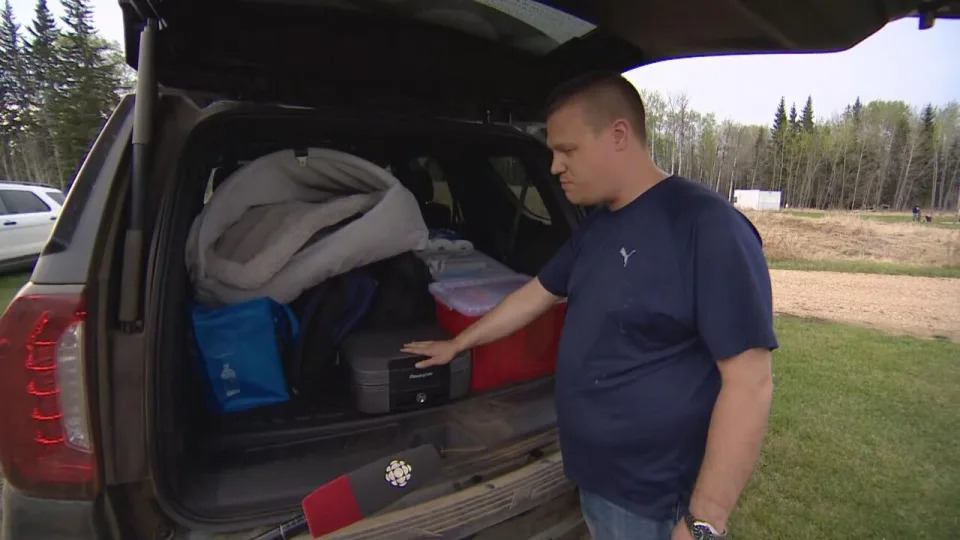
For some Fort McMurray residents like Aleks Mortlock, evacuating is a familiar and bitter experience.
For some Fort McMurray residents like Aleks Mortlock, evacuating is a familiar and bitter experience. (Sam Martin/CBC)
Kathleen Tomie, a resident from Dickinsfield, decided to leave Tuesday even though her neighbourhood was not ordered to evacuate.
In 2016, Tomie had to evacuate while pregnant with her daughter and console a young son who was frightened by the situation.
"It was hard. I don't want to do that again," Tomie said.
Ian Seggie, who lives in Thickwood Heights north of the Athabasca River, said he'll never forget the 2016 wildfire.
"I think people are still reeling with 2016, which was almost eight years ago to the day," Seggie told CBC.
Officials say the fire threatening Fort McMurray is a different kind of beast from the 2016 wildfire that devastated the community.
"Everything is like a carbon copy of that day, it felt like that," Seggie said.
"But what I'm noticing this time around, there's a lot of lessons that have been learned."
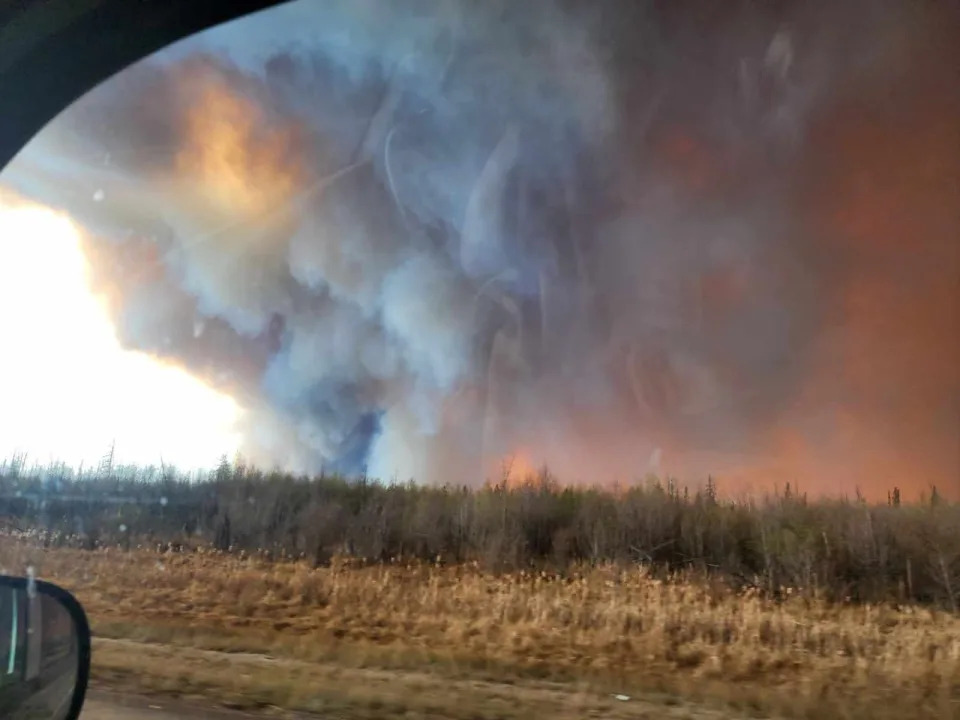
A wildfire threatening the community has now consumed nearly 21,000 hectares as shifting winds and rising temperatures continue to accelerate its growth and push the flames closer to the municipality.
A wildfire threatening the community has now consumed nearly 21,000 hectares as shifting winds and rising temperatures continue to accelerate its growth and push the flames closer to the municipality. (Submitted by Rochelle Yurko)
Jody Butz, the regional fire chief, told Wood Buffalo council Tuesday that up to 6,600 people could be in the evacuation zone.
Crews will be better able to defend these areas with the residents gone, Butz said. Many of the neighbourhood streets now under evacuation were devastated by fire in 2016 — Abasand and Beacon Hill were among the hardest hit.
Seggie said community members need to unite and help one another, whether it is the sharing of information or resources.
"It adds some calmness when people know they're being looked after ... we did that in 2016, and we'll do that again."
Canada city devastated by 2016 wildfire faces evacuations as new blaze nears
Leyland Cecco in Toronto
Tue, May 14, 2024
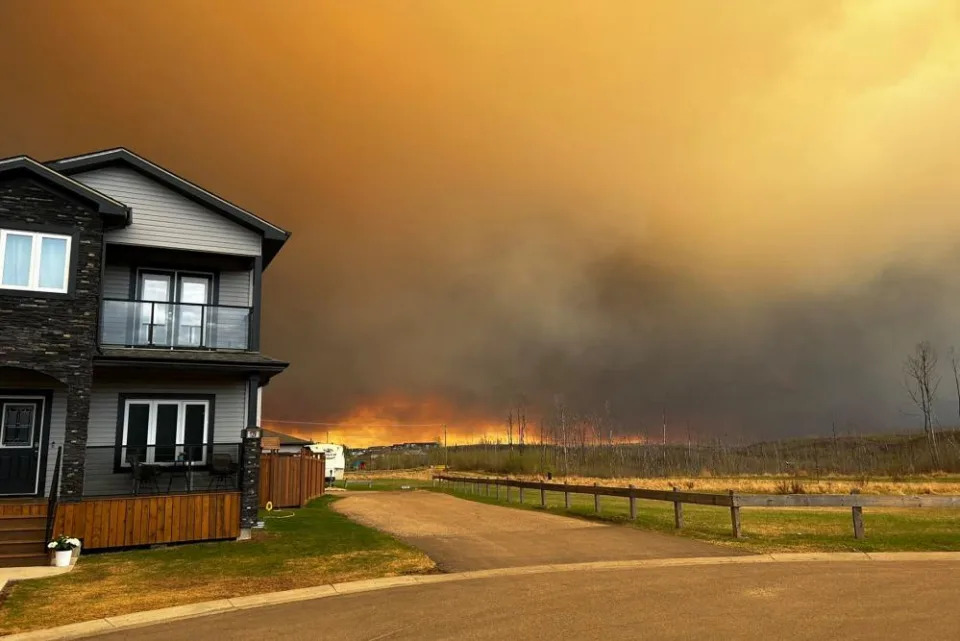
Residents of four suburbs in the Canadian city of Fort McMurray have been ordered to evacuate as a wildfire approaches the city, stirring grim reminders of the country’s costliest natural disaster.
Officials in the western province of Alberta issued evacuation orders for the neighbourhoods of Beacon Hill, Abasand, Prairie Creek and Grayling Terrace on Tuesday, telling all residents to leave by 4pm MT.
Related: ‘Absolutely apocalyptic’: Fort McMurray evacuees describe terror of Alberta wildfires
“Due to the approaching wildfire, interfacing communities are being evacuated to allow for fire suppression efforts,” the order said. Residents were advised to take pets, medications, important documents and emergency kits with them.
Officials have been closely monitoring a wildfire southwest of the city that has grown over recent days to cover 9,600 hectares, aided by arid conditions and strong winds. The huge fire has gradually been approaching Fort McMurray and is now about 13km (8 miles) from the city limits.
“Our main priority is the protection of life and property,” said Jody Butz, regional fire chief and director of emergency management, in a statement, adding the fire activity is “very different” from the blaze that ripped through the city eight years ago.
“All the dead and downed trees that were there, that’s what’s being burned right now, along with some dry grass,” said Butz.Interactive
Images on social media showed heavy traffic leaving the city, with the sky a dark amber hue from thick plumes of smoke.
For residents of Fort McMurray, the evacuation order was a reminder of the huge wildfire that tore through Canada’s oil sands capital in 2016.
“I want to recognise the anxiety that this brings, certainly to those residents that were here in 2016, and to those where this is their first experience and have heard the stories,” said Butz
During that blaze, nearly 90,000 people were forced to evacuate the city, crawling along in bumper-to-bumper traffic as ash rained down and flames licked the side of the highway.
The fire, dubbed The Beast, obliterated much of the city’s infrastructure, causing more than $9bn in damages.
“We’re seeing extreme fire behaviour. Smoke columns are developing and the skies are covered in smoke. Firefighters have been pulled from the fire line for safety reasons,” Josee St-Onge of Alberta Wildfire told reporters. “We continue to work on this wildfire with aerial support helicopters and air tankers are dropping water and retardant on the active edges of the fire.”
Wind is expected to keep pushing the fire to toward the city, said St-Onge.
“We understand that this is a very stressful time for the community. I want to assure everyone that we are doing everything we can.”
Related: British Columbia ‘extremely concerned’ as wildfire threatens to destroy town
There are currently more than 50 wildfires burning across the province of Alberta, according to officials, including two out-of-control fires: the one approaching Fort McMurray and another near the community of Grande Prairie.
Other provinces in western Canada are also on edge: crews are carefully watching a blaze on the edge of Fort Nelson, a town in northern British Columbia. Strong winds are expected to push the fire even closer to the community, with fears it could be overrun in the coming days.
In Manitoba, a massive blaze near Flin Flon has grown quickly, exploding in size from the 35 hectares to 3,000 hectares in a single day.
“I’ve been working in wildfire for 40 years … I’ve never seen a fire move like this fire moved,” chief conservation officer Earl Simmons of the Manitoba wildfire service told reporters Monday.
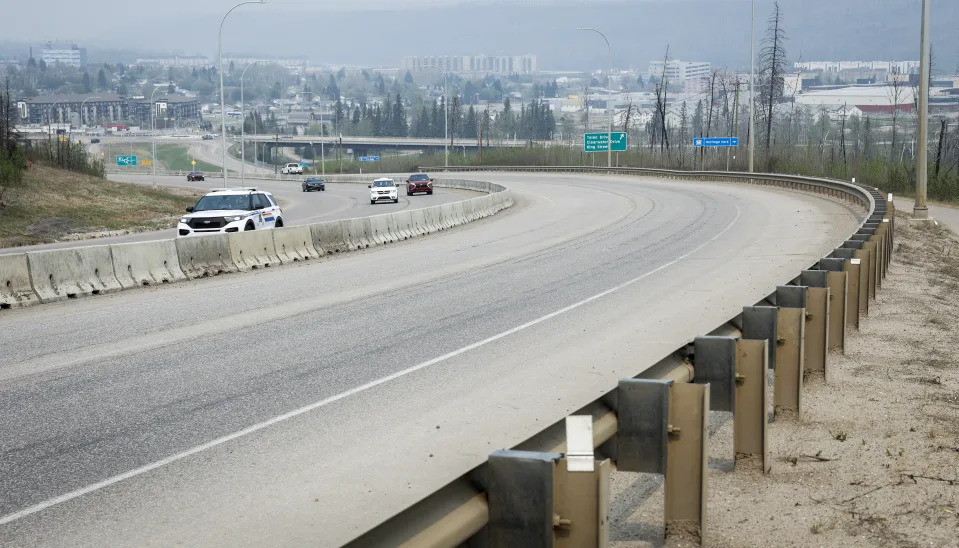
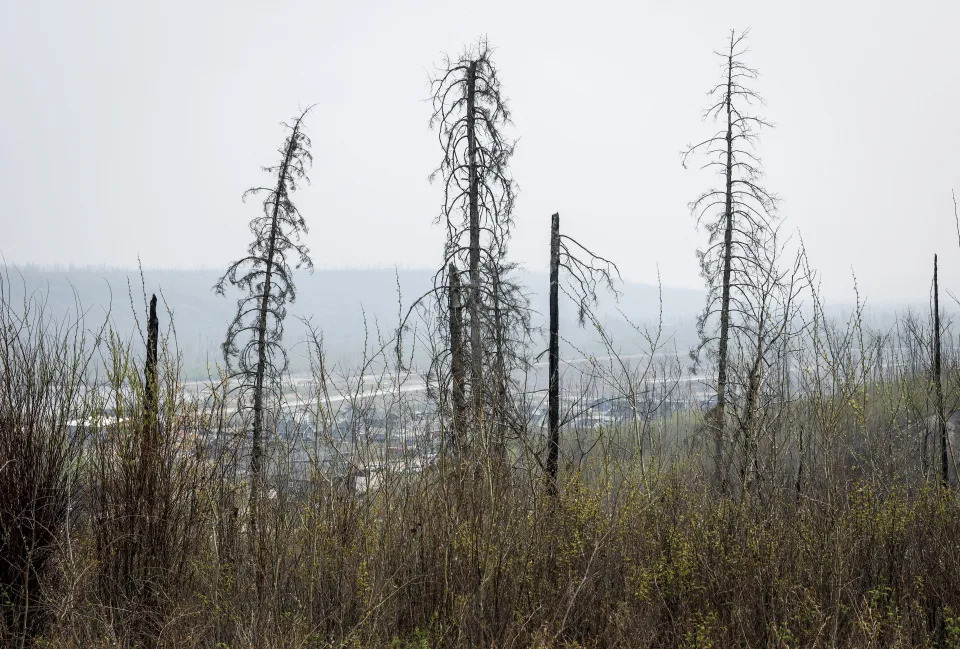
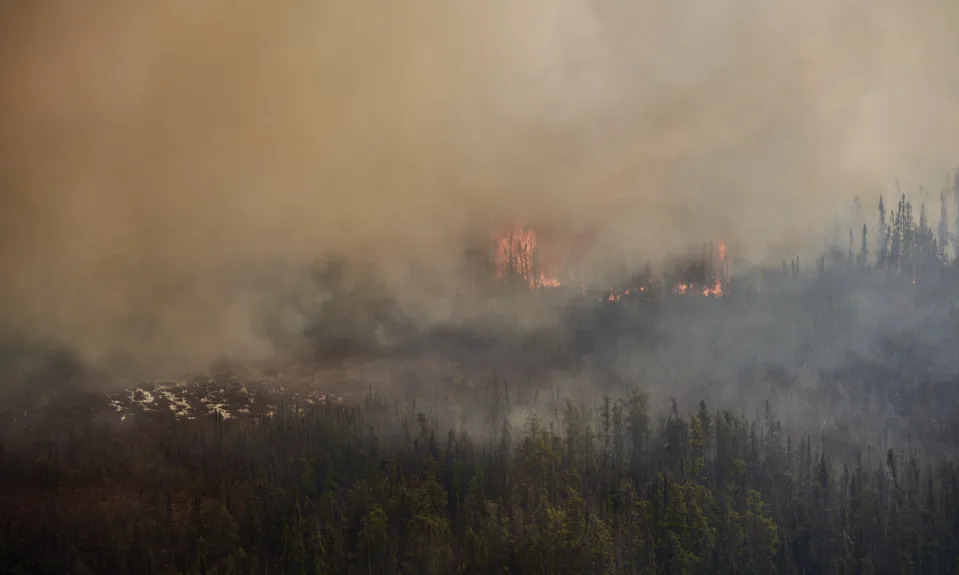
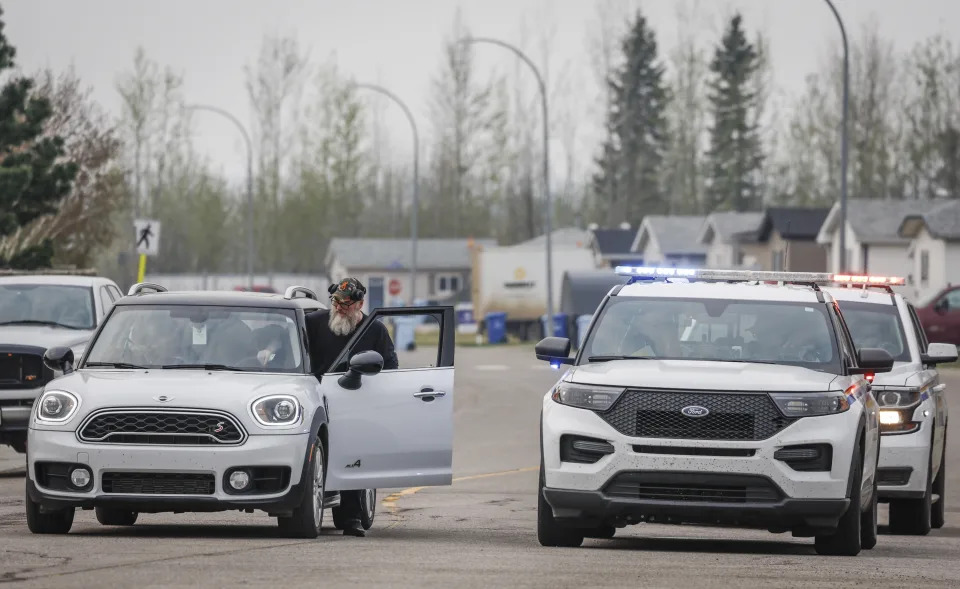
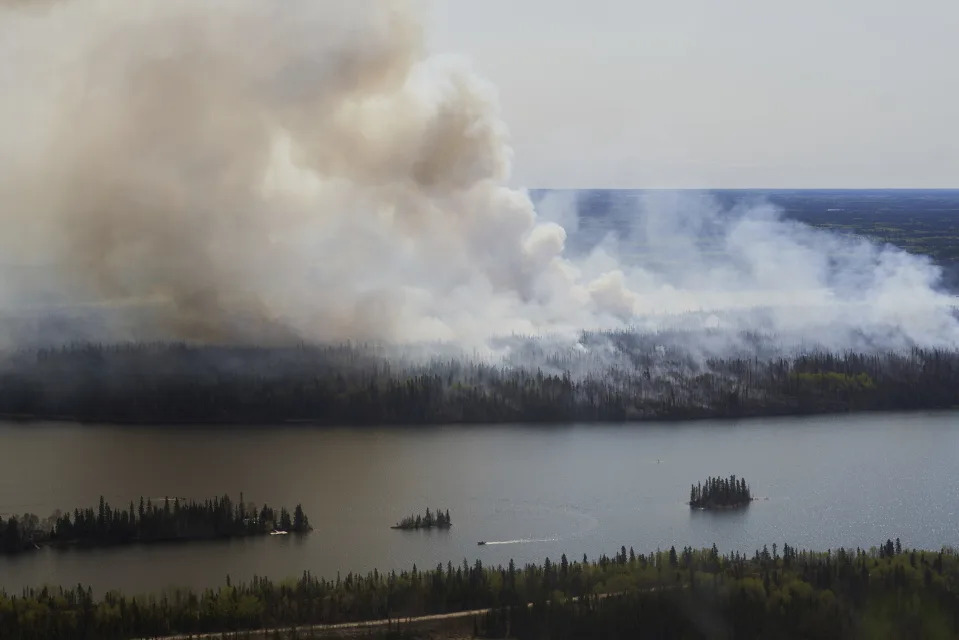
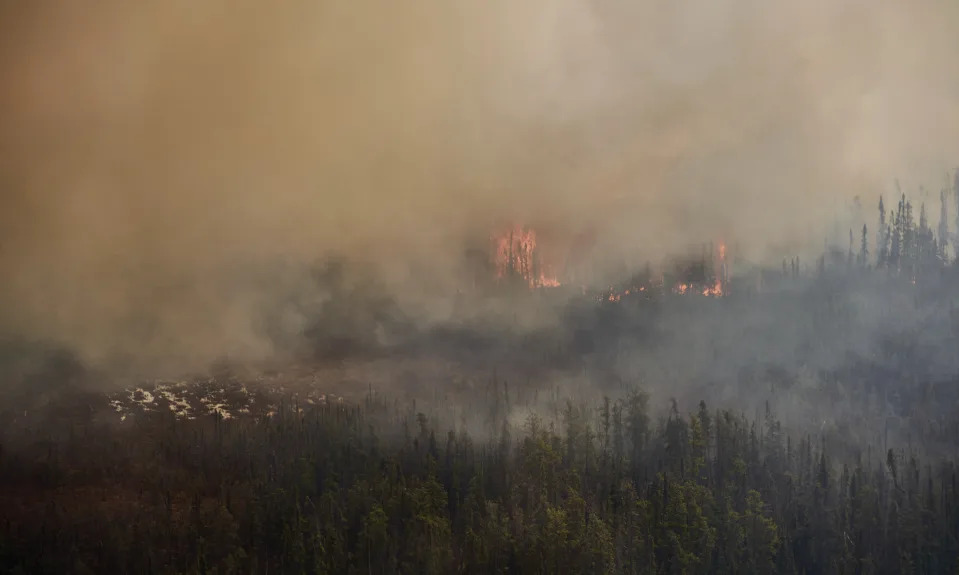
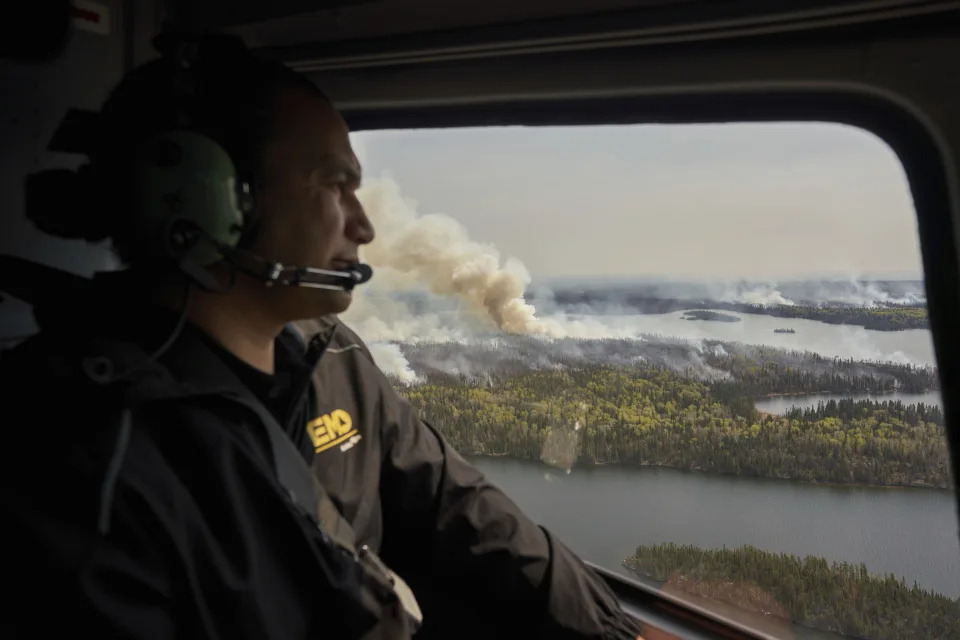
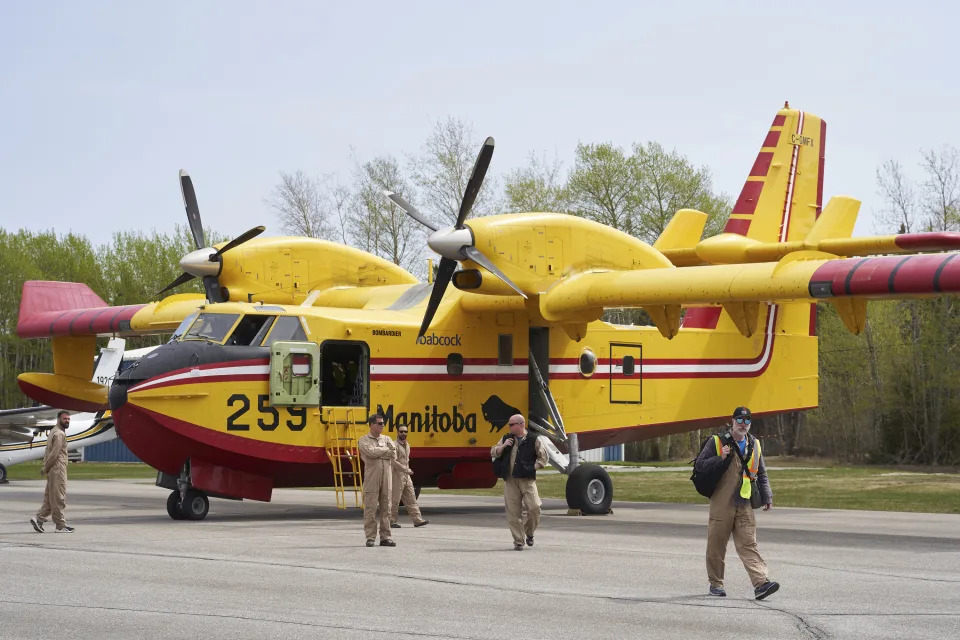
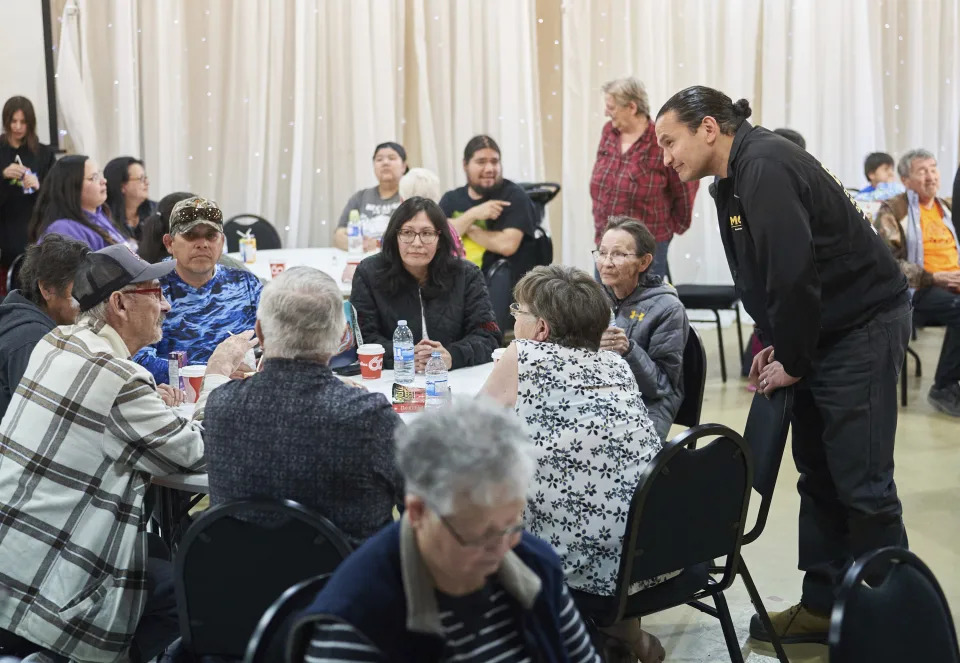
No comments:
Post a Comment